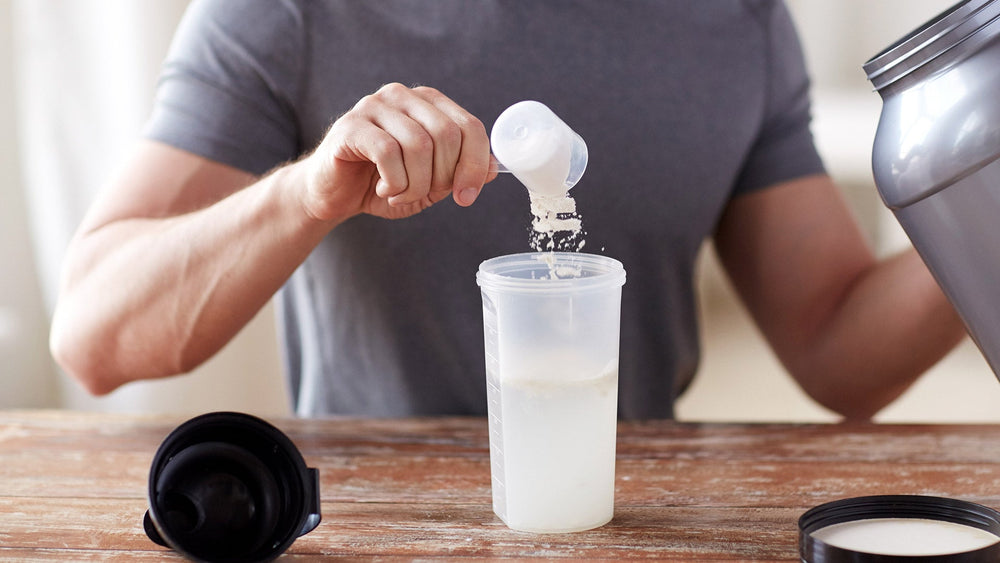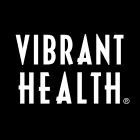
Plant Protein and Heavy Metals: What You Need to Know
In 2018, the non-profit organization The Clean Label Project (CLP) released a landmark study revealing undisclosed ingredients in many popular brands of protein supplements. In 2025, CLP put out a second edition of the study. Both found that popular protein powders had high degrees of undisclosed substances that raised serious health and transparency concerns.
CLP’s mission of informing the public about this issue is noble, and we’re grateful for their commitment to holding supplement providers accountable. However, the public needs more context to fully understand the implications of these findings.
Below, we’ll break down why lead was found in many popular protein powders (including an update for 2025 and beyond), how CLP’s findings relate to applicable regulations, whether plant-based protein is safe, and how to find the healthiest, safest, and highest-quality option.
Why is There Lead in Protein Powder?
While many consumers were surprised to hear that metals like lead, arsenic, cadmium, and mercury were found in popular protein powders, the results are actually easy to explain.
Overwhelmingly, plant-based proteins in the study were found to have higher instances of heavy metals than other protein sources, such as whey. Why?
Heavy metals are present in all sorts of vegetable crops, to lesser or greater degrees, depending on the type of vegetable and the soil it's grown in. It follows, then, that many plant-based products will have heavy metal contamination.
In other words, we encounter metals in many common foods.
The FDA has long known about lead in common foods. In fact, a study spanning 2006–2013, long before the CLP’s, found that 4oz servings of shrimp contained 23.80mcg of lead, on average.

There is a serious responsibility to disclose this information on the part of the product manufacturer. There is also an onus on development teams to practice due diligence in ingredient selection and third-party testing to ensure the cleanest possible product.
2025 Update: Heavy Metals Still Found in Protein
CLP recently followed up on their landmark 2018 report with their Protein Study 2.0, published in January of 2025. The new report analyzed 160 of the most popular protein powders from 70 brands, covering 83% of the total market share. Of that sample, 47% of products exceeded one or more federal or state regulatory standards for bisphenols or heavy metals (e.g., lead).
Some standout statistics from the study concern specific kinds of proteins represented, along with variance due to flavor. Plant-based (77%) and organic protein powders (79%) led the field in terms of exceeding California’s Prop 65 limits for lead (more on this below). In addition, 65% of chocolate-flavored protein powders were over this limit, with 29% exceeding it 2X or more.
These results show that organic status, even certified by the United States Department of Agriculture (USDA) National Organic Program (NOP), cannot guarantee a lead-free product.
Even still, there is some underlying context that is needed to understand the study fully.
Heavy Metal Regulations in Context
Some states, like California, have passed legislation requiring consumer products to disclose the presence of certain contaminants. We are in favor of these and all transparency requirements.
However, it’s worth noting that California’s Prop 65 requires labeling for amounts of lead significantly below widely accepted safety limits. Prop 65 requires lead labeling within its reproductive toxicity Maximum Allowable Dose Level (MADL) of 0.5mcg per day. This dose is significantly lower than the lead found in common foods, like shrimp (see above).
And this is especially true when actual portion sizes (not the 4oz. studied) are taken into account.
The US Food and Drug Administration (FDA) does not presently maintain a healthy upper limit on lead exposure. However, the FDA does have an interim reference level (IRL) for lead based on a 10X safety factor—that is, consuming up to 10X the FDA’s IRL for lead would likely result in negative health outcomes. Those IRLs are 2.2 mcg/day for children and 8.8 mcg/day for women.
In other words, the FDA’s position is that adults practicing an abundance of caution should limit their lead exposure to about 8.8 mcg/day, or about 17.6X the Prop 65 limit for lead labeling.
Prop 65’s lead labeling standards require an abundance of transparency and caution, which we admire. But exceeding Prop 65 limits—even doubling them—still leaves a product well below federally accepted levels of lead exposure, even before accounting for the 10X safety factor.
Are Plant-Based Protein Powders Safe?
Ultimately, CLP’s findings can be somewhat misleading or hard to fully understand. Plant-based proteins are safe and can absolutely support a healthy lifestyle, even if they contain trace amounts of lead and other heavy metals.
Small amounts of lead and other minerals are to be expected in supplements. From a broader, global perspective, the idea that consumers should avoid minerals and other naturally occurring substances in the foods and drinks they consume is recent and somewhat unique to the US. An example of this can be seen in what is considered desirable in the US vs. in European countries, where bottled water often proudly displays mineral content rather than its purification status.
Ultimately, the presence of trace amounts of lead does not necessarily make a protein powder unsafe.
With all this said, producers of plant-based proteins should absolutely be transparent about their ingredients, letting consumers know if lead or other metals are in their products.
Vibrant Health’s Standards
At Vibrant Health, our products undergo rigorous testing and vetting to ensure each supplement is as clean and healthy as possible. First, our clinical nutritionist creates a blueprint for a product's formula. Next, we carefully source and supply every ingredient (a complex process referred to as tolling). The source of every ingredient in our products is managed in-house, resulting in an unmatched level of product quality and proper potency.
Once the source of an ingredient has been determined, it’s assessed by a third party through sampling. Certificates of analysis (COAs) are analyzed, and clinical testing results are reviewed. If the material passes this testing round, it’s on to blend in one of our GMP-certified facilities. After blending is complete, our finished product is sent to an independent, third-party, National Environmental Laboratory Accreditation Program (NELAP) certified laboratory for testing to confirm the nutritional analysis and guarantee our product meets heavy metal safety standards.
We know trust takes time to build, and we're proud to have earned the trust of the industry with our commitment to quality standards, clinically backed formulas, and third-party testing since the very first bottle of Green Vibrance. Looking ahead, we’re committed to maintaining the same high-quality standards.
Choosing the Safest, Best Supplements
Protein powders aren’t the only supplements that can contain trace amounts of lead and other contaminants that consumers are justifiably worried about. Staying safe requires attention to detail when comparing different providers. Vigilance is the key to avoiding any potential risks.
Texas Health’s advice for staying safe when choosing supplements prioritizes four elements:
-
Third-party testing – Not every brand performs rigorous testing. Seek out those that do, and look for COAs that call out methods used and/or certifications of the testing bodies.
-
Organic verification – Practice caution when comparing “organic” supplements, as they often have higher lead amounts per the CLP. Look for USDA/NOP-verified organic certifications.
-
Safe flavor options – Vanilla-based flavors tend to have lower amounts of both lead and cadmium than their chocolate counterparts, making them a safer choice for consumers.
-
Independent reporting – Reports like the CLP’s typically list safer options to consider, so triangulating these sources’ recommendations can help identify the safest supplements.
One third-party-certified supplement full of science-backed, high-quality ingredients, available in a delicious vanilla flavor, is Vibrant Health’s very own Maximum Vibrance.
Vibrant Health: Supplements You Can Trust
At Vibrant Health, we’ve been pioneers in science-backed nutrition for over 30 years, formulating transparently sourced superfood supplements that prioritize real results.
We’re committed to transparency and education, helping consumers make informed choices in support of a holistically healthy lifestyle. Our supplements use nothing but the best ingredients, so we have nothing to hide when it comes to labeling. And we’re thankful for consumer reports like CLP’s for helping bring more attention to the need for transparency across the industry.
Your wellness journey deserves accurate, credible, and empowering guidance. That’s why Vibrant Health is here—to help you live a healthier, more vibrant life, backed by real expertise. If you have any questions at all, reach out to our Customer Service team at 1-800-242-1835 or mail@vibranthealth.com.
DISCLAIMER: This information is not intended as a substitute for the advice provided by a competent healthcare professional. You should not use this information in diagnosing or treating a health problem. No claim or opinion in this blog is intended to be, nor should be construed to be medical advice. If you are now taking any drugs, prescribed or not, or have a medical condition, please consult a competent physician who is aware of herb/drug interactions before taking any herbal supplements. The information presented herein has not been evaluated by the FDA or the Department of Health and is not intended to diagnose, prevent, cure, mitigate, or treat any disease or illness.

Why Trust Vibrant Health?
At Vibrant Health, we’ve been pioneers in science-backed nutrition for over 30 years, formulating transparently sourced superfood supplements that prioritize real results. Our blog is an extension of that commitment—a trusted resource for expert-driven wellness insights.
Every article is crafted with nutrition expertise, backed by the latest scientific research, and reviewed by our in-house Certified Health Coaches and Product Educators. We break down complex health topics into practical, actionable advice—helping you make informed choices about superfoods, supplementation, and holistic wellness.As a brand that has earned thousands of 5-star reviews and the trust of health professionals, we ensure that our content reflects the same quality, integrity, and transparency as our products.
Your wellness journey deserves accurate, credible, and empowering guidance. That’s why Vibrant Health’s blog is here—to help you live a healthier, more vibrant life, backed by real expertise


